Notice: This post is being written during the COVID-19 pandemic and at this time, the park is closed to visitors. Please stay safe and follow your state or country’s guidelines for travel in your region. More information on the park’s current status can be found here.
Looks like they finally caught up with me. They put me on that train featured in the movie “3:10 to Yuma” and I must serve my time in the Yuma Territorial Prison. My “sentence” would only last a few hours visiting the once-notorious prison that is now a state park. That “mug shot” of me features a mirror that allowed prison officials to take a front and side view mug shot on a single exposure. The mirror is set up for guests to don a quick-change striped jacket, grab one of the prison numbers, and get someone to snap your photo. The Yuma prison is one of the first to use a mirror in creating prison record photographs.
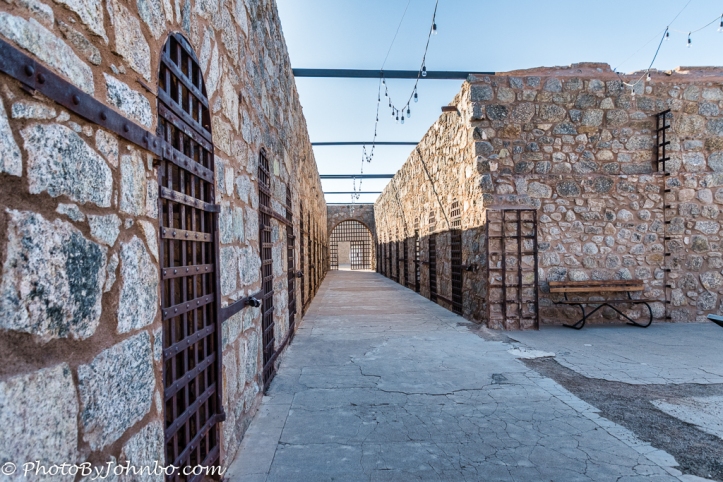 The prison was open for business between 1876 and 1909, the first batch of prisoners were “enlisted” to help build their own cells. The prison’s reputation as a “hell hole” was well deserved with summer high temperatures in Yuma averaging between 105 and 110 degrees F (around 40 degrees C). A guided tour of the prison will give you a view of a day in the life of a prisoner.
The prison was open for business between 1876 and 1909, the first batch of prisoners were “enlisted” to help build their own cells. The prison’s reputation as a “hell hole” was well deserved with summer high temperatures in Yuma averaging between 105 and 110 degrees F (around 40 degrees C). A guided tour of the prison will give you a view of a day in the life of a prisoner.
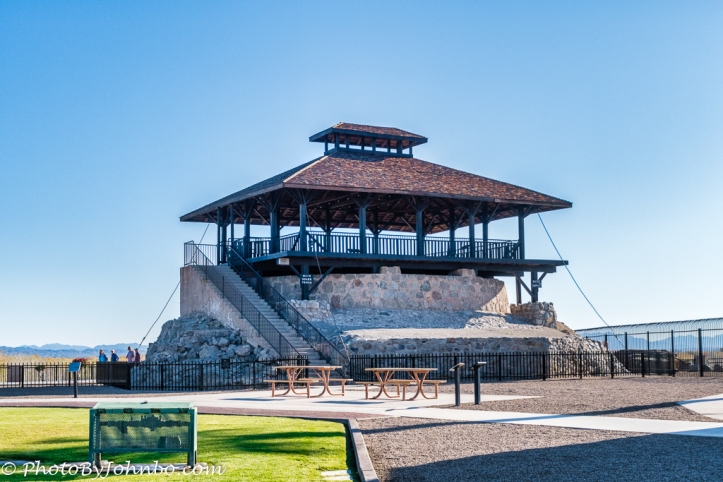 Built high on a bluff along the Colorado River at the Arizona-California border, a large observation tower overlooked the prison yard and the surrounding landscape. After the prison closed in 1909, a fire destroyed Yuma High School. For five years from 1910 to 1914, the school board rented some of the structures in the prison for use as a temporary high school. The school’s athletic teams adopted the concept of spending time in prison and named themselves The Criminals, the dubious honor given to them by an opposing football team. In 1917, the name was approved by the school board and Yuma High School carries that mascot name to this day.
Built high on a bluff along the Colorado River at the Arizona-California border, a large observation tower overlooked the prison yard and the surrounding landscape. After the prison closed in 1909, a fire destroyed Yuma High School. For five years from 1910 to 1914, the school board rented some of the structures in the prison for use as a temporary high school. The school’s athletic teams adopted the concept of spending time in prison and named themselves The Criminals, the dubious honor given to them by an opposing football team. In 1917, the name was approved by the school board and Yuma High School carries that mascot name to this day.
Over the years, the prison was used as a hospital, and the Veterans of Foreign Wars (VFW) used one of the buildings as a clubhouse for almost 30 years. Southern Pacific Railroad acquired and demolished one section of the prison to make way for new tracks crossing the area, and during the Great Depression, hobos and homeless families lived in the cells.
 The museum carries many artifacts of life in the late 19th century in the prison. Large panels on the walls describe the most notorious of the prison’s “guests.” Early on, some women were also incarcerated among the men, but eventually, a women’s section was constructed. Probably the most notorious female prisoner was Pearl Hart, one of the very few female stagecoach robbers.
The museum carries many artifacts of life in the late 19th century in the prison. Large panels on the walls describe the most notorious of the prison’s “guests.” Early on, some women were also incarcerated among the men, but eventually, a women’s section was constructed. Probably the most notorious female prisoner was Pearl Hart, one of the very few female stagecoach robbers.
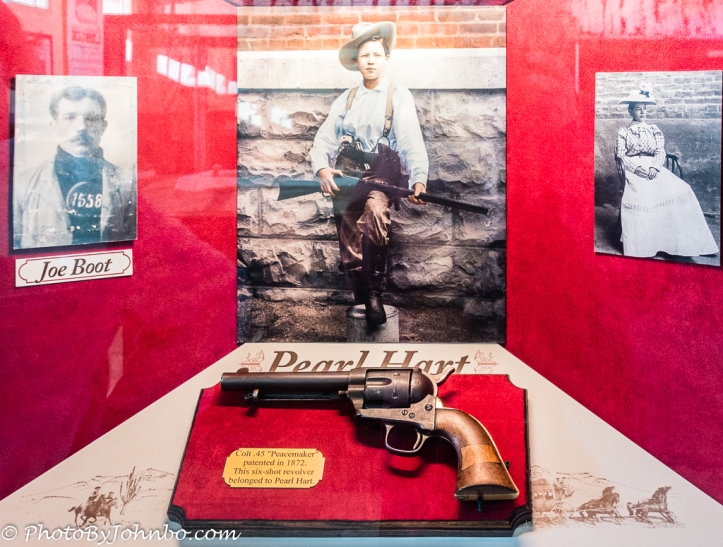 In 1899 Pearl Hart and her companion at the time, Joe Boot, robbed the stage that ran between Florence and Globe, Arizona. The robbery was successful, but the getaway, not so much. Found innocent of the robbery, the judge claimed that Pearl “… flirted with the jury, bending them to her will.” Another jury found her guilty of carrying an unlawful firearm and she was sentenced to five years at Yuma where her notoriety was assured in history. There is an interesting biography of Pearl Hart here.
In 1899 Pearl Hart and her companion at the time, Joe Boot, robbed the stage that ran between Florence and Globe, Arizona. The robbery was successful, but the getaway, not so much. Found innocent of the robbery, the judge claimed that Pearl “… flirted with the jury, bending them to her will.” Another jury found her guilty of carrying an unlawful firearm and she was sentenced to five years at Yuma where her notoriety was assured in history. There is an interesting biography of Pearl Hart here.
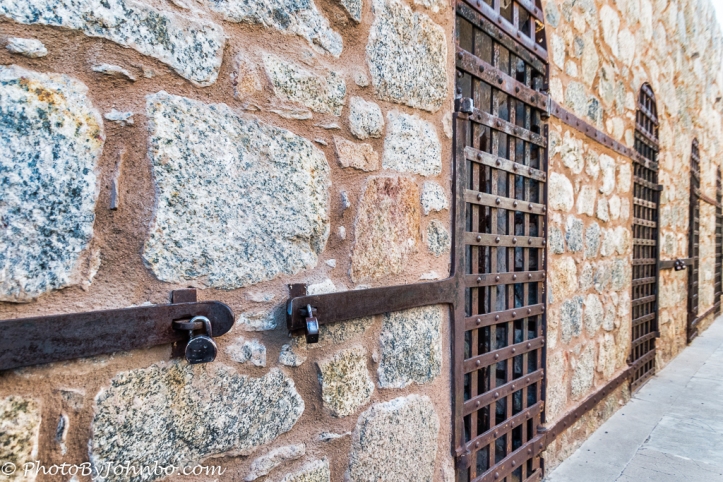 The large cell doors have a long hasp making the lock assembly invulnerable from prisoner tampering. The small cells were typically configured to hold six prisoners on two bunks, three beds high. I submit for your review a gallery of images captured (interesting choice of words) at Yuma Territorial Prison State Historic Park. In most browsers, you can click on an image to enlarge it and to scroll through the gallery.
The large cell doors have a long hasp making the lock assembly invulnerable from prisoner tampering. The small cells were typically configured to hold six prisoners on two bunks, three beds high. I submit for your review a gallery of images captured (interesting choice of words) at Yuma Territorial Prison State Historic Park. In most browsers, you can click on an image to enlarge it and to scroll through the gallery.
John Steiner
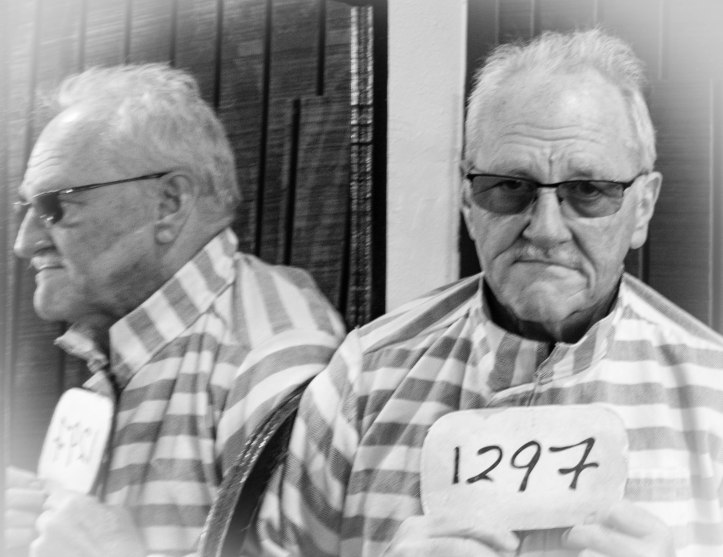













This looks like a great place to visit. Thank you for sharing.
On the road between Phoenix and San Diego, it’s a nice place to take a break and learn a bit of Arizona history. Thanks for commenting!
Very informative post! Great photos, especially the one of that famous criminal! 🙂
Thanks. It is an interesting place to visit. I only picked one of several notorious prisoners who spent some time there. Oh… you mean that black and white mug shot, eh? >grin<
Great post, John. I especially love your “mug” shot!! I love these historical sites. Thanks for sharing what you saw/learned.
Very clever of the prison administrators to discover a way to save on film and photo paper. One shot and it’s done. 🙂
Very clever. Looks like a great park to visit. I’ll put it on my list for our next road trip. 😊😊
Fascinating John. Thank you.
You are welcome!